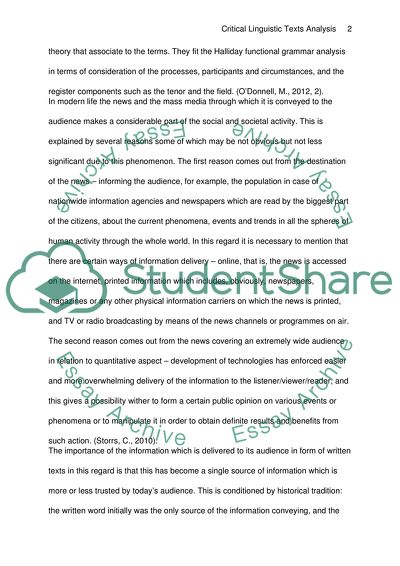Cite this document
(“Stance Agency and Affectedness: A Critical Linguistic Analysis Research Paper - 1”, n.d.)
Stance Agency and Affectedness: A Critical Linguistic Analysis Research Paper - 1. Retrieved from https://studentshare.org/english/1693951-comparison-of-two-news-articles-online-for-stance-and-agency-and-affectedness-a-critical-linguistic-analysis
Stance Agency and Affectedness: A Critical Linguistic Analysis Research Paper - 1. Retrieved from https://studentshare.org/english/1693951-comparison-of-two-news-articles-online-for-stance-and-agency-and-affectedness-a-critical-linguistic-analysis
(Stance Agency and Affectedness: A Critical Linguistic Analysis Research Paper - 1)
Stance Agency and Affectedness: A Critical Linguistic Analysis Research Paper - 1. https://studentshare.org/english/1693951-comparison-of-two-news-articles-online-for-stance-and-agency-and-affectedness-a-critical-linguistic-analysis.
Stance Agency and Affectedness: A Critical Linguistic Analysis Research Paper - 1. https://studentshare.org/english/1693951-comparison-of-two-news-articles-online-for-stance-and-agency-and-affectedness-a-critical-linguistic-analysis.
“Stance Agency and Affectedness: A Critical Linguistic Analysis Research Paper - 1”, n.d. https://studentshare.org/english/1693951-comparison-of-two-news-articles-online-for-stance-and-agency-and-affectedness-a-critical-linguistic-analysis.


